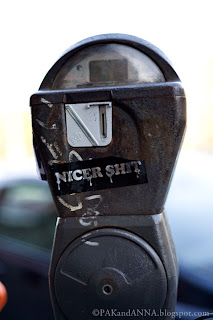
The front cover of the December 2008 issue of Conde Nast Portfolio magazine shows a different view of Arturo Di Modica's bronze sculpture "Charging Bull" than what New York City's tourists are used to seeing. Photo-illustrator Ji Lee reinterprets the normally aggressive bull figure, a popular attraction in Manhattan's Financial District, for the magazine as being outright dead. The copy on the cover reads "After the Fall - Greed, stupidity, and really bad luck: How Wall Street did itself in" by Michael Lewis.
Author Michael Lewis is known for writing the scandalous "Liar's Poker" a thought-provoking insider's account of his four year work experience with the Wall Street firm Salomon Brothers (published by Penguin, 1990). In the Portfolio magazine article titled "The End", Mr. Lewis lays out (with help from Meredith Whitney and Steve Eisman) the eye-opening details of the current financial crisis for readers to digest. It isn't pretty and listed below are several excerpts.
"To this day, the willingness of a Wall Street investment bank to pay me hundreds of thousands of dollars to dispense investment advice to grownups remains a mystery to me. I was 24 years old, with no experience of, or particular interest in, guessing which stocks and bonds would rise and which would fall. The essential function of Wall Street is to allocate capital - to decide who should get it and who should not. Believe me when I tell you that I hadn't the first clue."
"Sooner rather than later, someone was going to identify me, along with a lot of people more or less like me, as a fraud. Sooner rather than later, there would come a Great Reckoning when Wall Street would wake up and hundreds if not thousands of young people like me, who had no business making huge bets with other people's money, would be expelled from finance."
"In the two decades since then, I had been waiting for the end of Wall Street. The outrageous bonuses, the slender returns to shareholders, the never-ending scandals, the bursting of the internet bubble, the crisis following the collapse of Long-Term Capital Management: Over and over again, the big Wall Street investment banks would be, in some narrow way, discredited. Yet they just kept on growing, along with the sums of money that they doled out to 26-year-olds to perform tasks of no obvious social utility. The rebellion by American youth against the money culture never happened. Why bother to overturn your parents' world when you can buy it, slice it up into tranches, and sell off the pieces?"
"I did subprime first. I lived with the worst first. These guys lied to infinity. What I learned from that experience was that Wall Street didn't give a shit what it sold."
"The juiciest shorts - the bonds ultimately backed by the mortgages most likely to default - had several characteristics. They'd be in what Wall Street people were now calling the sand states: Arizona, California, Florida, Nevada. The loans would have been made by one of the more dubious mortgage lenders; Long Beach Financial, wholly owned by Washington Mutual, was a great example. Long Beach Financial was moving money out the door as fast as it could, few questions asked, in loans built to self-destruct. It specialized in asking homeowners with bad credit and no proof of income to put no money down and defer interest payments for as long as possible. In Bakersfield, California, a Mexican strawberry picker with an income of $14,000 and no English was lent every penny he needed to buy a house for $720,000."
"The one thing Steve always says," Daniel explains, "is you must assume they are lying to you. They will always lie to you."
He had tried a thousand times in a thousand ways to explain how screwed up the business was, and no one wanted to hear it. "That Wall Street has gone down because of this is justice," he says. "They fucked people. They built a castle to rip people off. Not once in all these years have I come across a person inside a big Wall Street firm who was having a crisis of conscience."


















